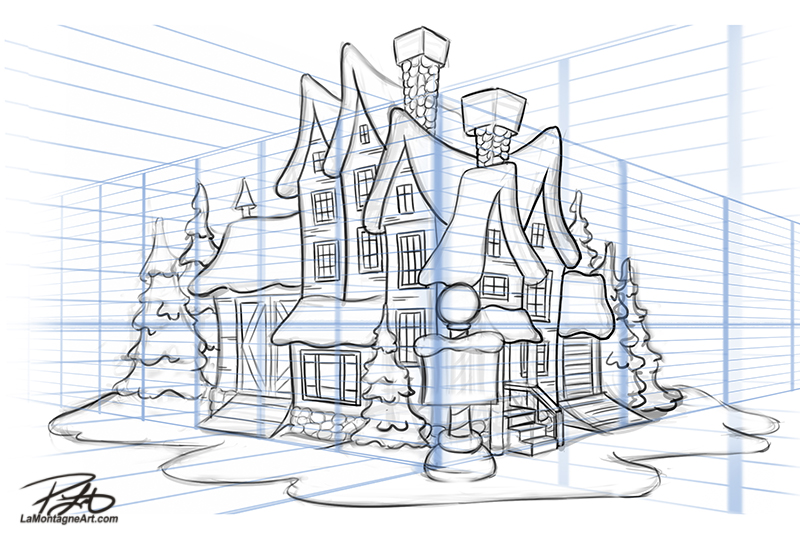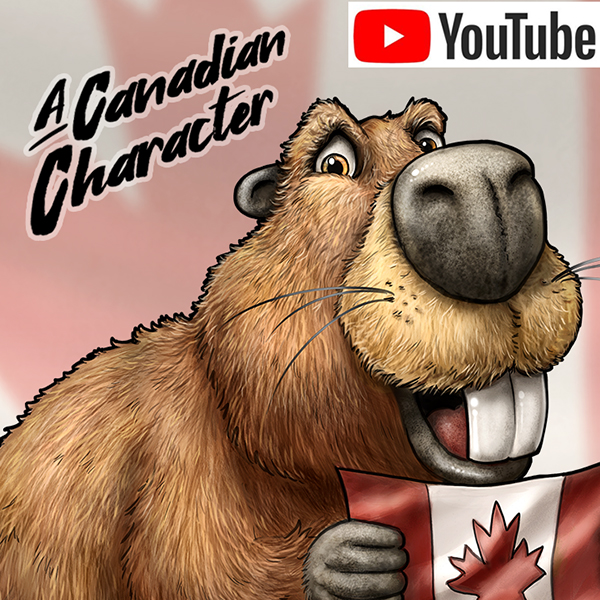
Whenever I go away, I rarely have time to draw a local cartoon for the Outlook, so I send them a selection of my syndicated cartoons to choose from. Those are the same ones I send to my other papers each day.
I had already done that last week when my former editor sent me a text asking if I had heard that Carol Picard had passed away. I knew she had been in poor health, but it was still very sad news. For her family, of course, but also for anyone in the valley who knew her, and that was a great many people.
Carol had a profound impact on this community. Rather than try to sum it up myself and risk falling short, I’ll refer you to the piece in this week’s Outlook.
Running a syndicated cartoon this week would have felt wrong. I was grateful to find out before I left, so I could draw something more fitting.
It is no exaggeration to say that I might not have had an art career if not for Carol Picard.
In the summer of 2001, Shonna and I moved from Banff to Canmore. My three years of drawing cartoons for the Banff Crag & Canyon were ending, and things there were not working out. Around the same time, though I had not yet met her, Carol and two friends were launching a new paper to serve the whole valley, competing with the established newspapers in Banff and Canmore. Many people thought they were crazy and told them so.
A journalist from the Banff paper, who was joining them, told me about it and said they might need a cartoonist. I reached out to Carol. She knew my work and told me she would love to have me on board. The timing was perfect, and I said yes.
Before long, Carol asked me why I was not syndicated. At the time, I did not know her long history as a professional journalist. I explained that syndication was difficult to break into. Syndicates sell a cartoonist’s work to newspapers and keep half the money in return. They have the connections to get past the gatekeepers. I had tried a couple of them but had been rejected.
Carol scoffed and said, “Just do it yourself.”
Wait. I could do that?
She told me how. Leaving out the dull details, I started drawing more cartoons each week. I signed a few papers for a couple of years, then a few more, but it was a slog. I wanted to quit more than once. Eventually, though, I gained traction, and in 2006 I quit my full-time job to work for myself.
The only reason I am still a working cartoonist today is that I never landed a daily newspaper job. Most of those jobs have disappeared. And had I signed with a syndicate early on, it would never have been worth it. Most of them are gone now as well.
If I had not become a full-time cartoonist, I would not have been in the position in 2009 to explore my whimsical wildlife art, which now makes up more than half of my business and is the work I love most. I cannot imagine doing anything else.
All because Carol Picard made me realize what was possible. That when people tell you no, you find another way.
It is also why the Rocky Mountain Outlook is still winning awards today while those other newspapers are long gone. I am proud to have had a cartoon in every issue since day one.
Yesterday, Carol’s husband, Robin, called to thank me for the cartoon. I had not reached out yet, knowing he would be hearing from so many people offering condolences, and I wanted to give it a little time.
We laughed about a story we both know well. Carol once told me I did not need to thank her anymore, since I already had many times, for the influence she had on my career and my life. But I am glad I thanked her more often than necessary, rather than regret not having said it enough.
And I got to do it one more time in the cartoon.




 Then I’ll drop the opacity of the sketch layer, so it’s very faint and create cleaner black lines on the layer above. I call this an Ink layer, even though there’s no ink involved.
Then I’ll drop the opacity of the sketch layer, so it’s very faint and create cleaner black lines on the layer above. I call this an Ink layer, even though there’s no ink involved. I’ll delete the sketch, create a new layer beneath the ink layer and fill in sections of flat colour on different layers. This helps me establish a base colour for separate pieces and select certain painting sections easily.
I’ll delete the sketch, create a new layer beneath the ink layer and fill in sections of flat colour on different layers. This helps me establish a base colour for separate pieces and select certain painting sections easily. Finally, I’ll create a painted background, add talk bubbles, my text and signature, and save different formats to send to my newspaper clients across Canada.
Finally, I’ll create a painted background, add talk bubbles, my text and signature, and save different formats to send to my newspaper clients across Canada. The painting process I use for my whimsical wildlife and portraits of people is more complicated because each painting takes many hours to complete and involves a lot of fine detail. But the tools are the same. Many artists have asked me about my painting brushes over the years, and they’re surprised that they’re not complicated. Just like in traditional art, it isn’t the brush; it’s the person wielding it.
The painting process I use for my whimsical wildlife and portraits of people is more complicated because each painting takes many hours to complete and involves a lot of fine detail. But the tools are the same. Many artists have asked me about my painting brushes over the years, and they’re surprised that they’re not complicated. Just like in traditional art, it isn’t the brush; it’s the person wielding it.


